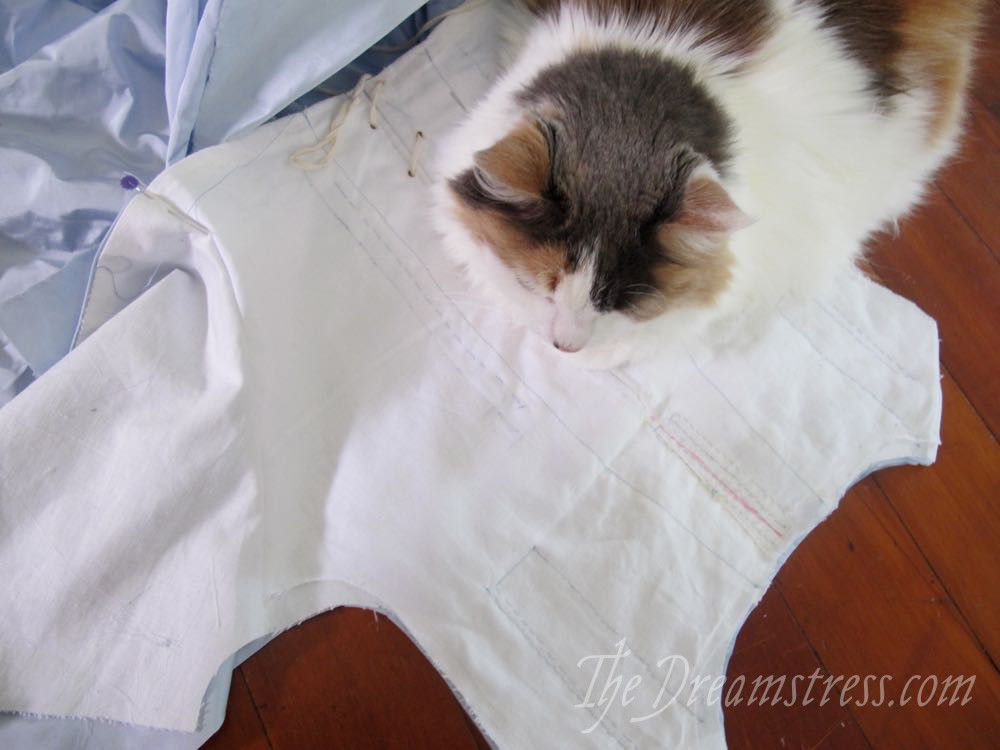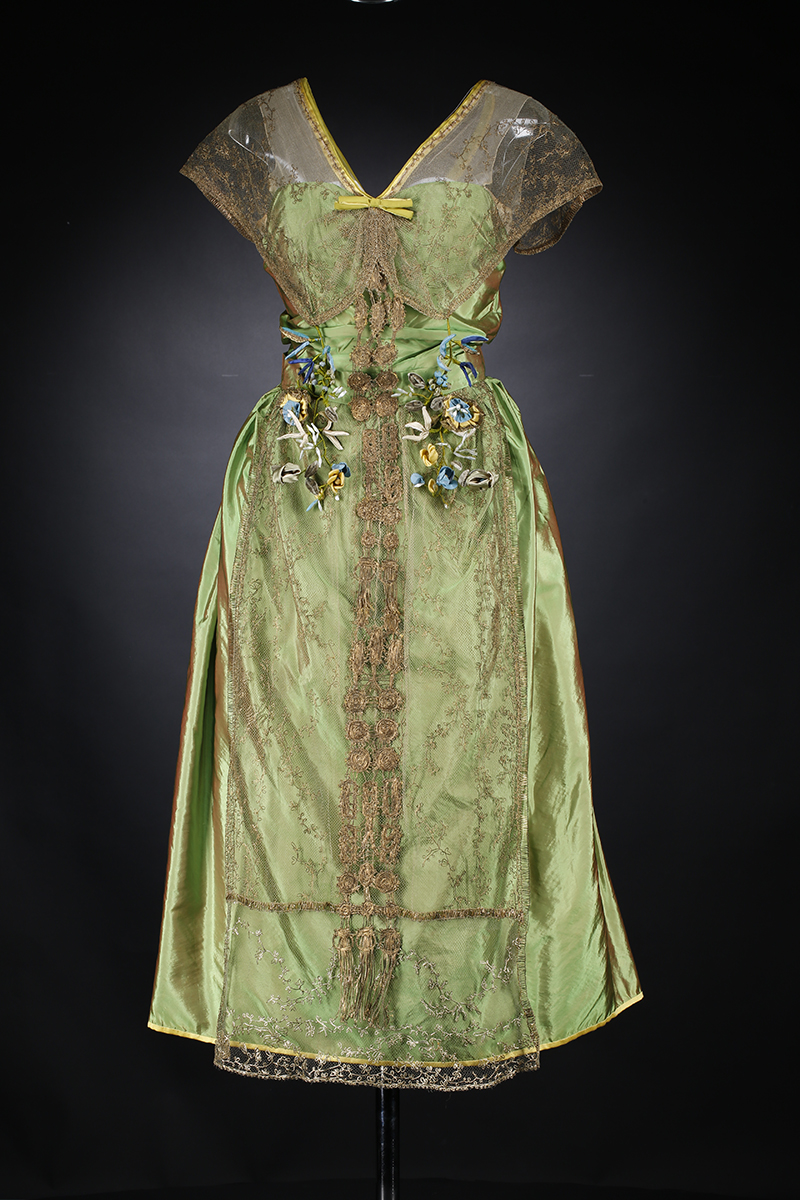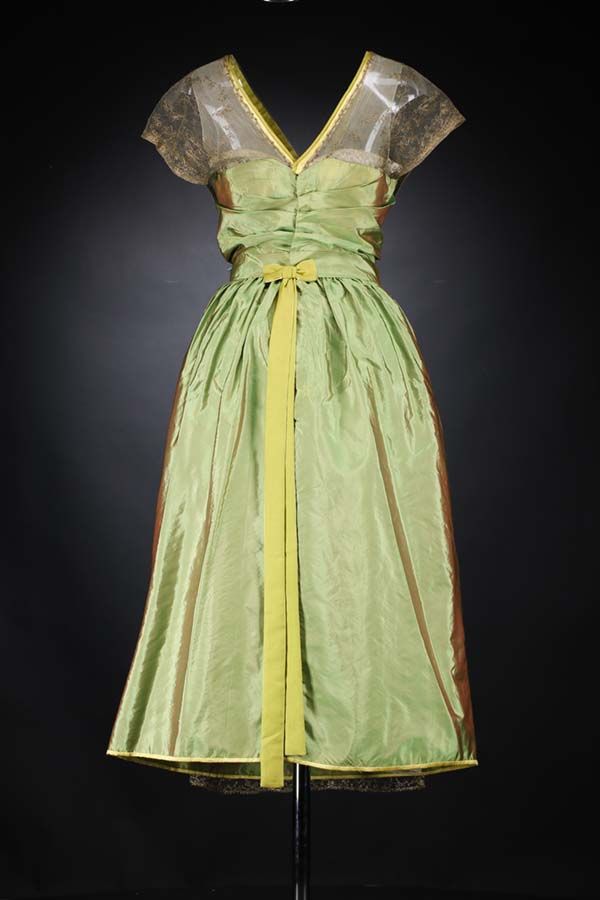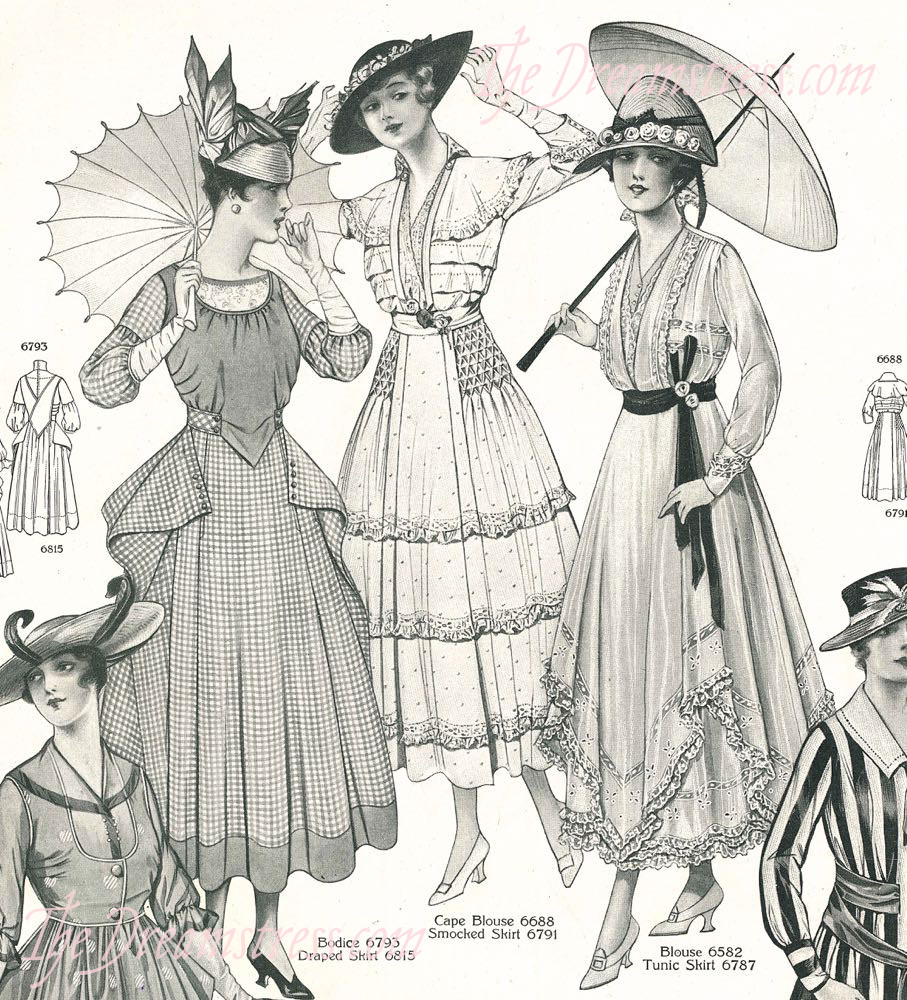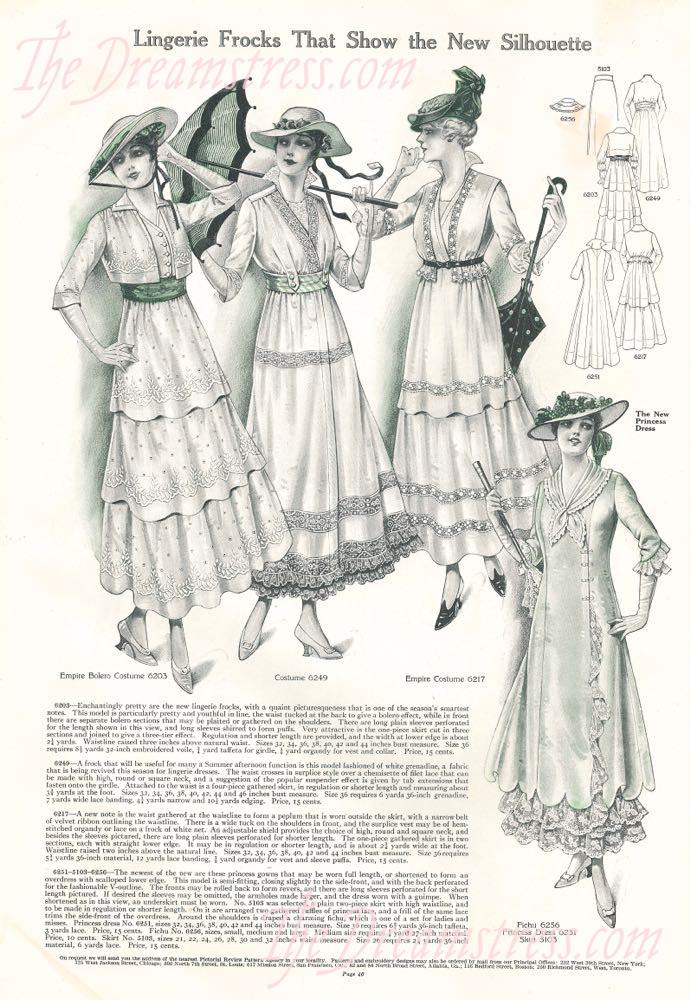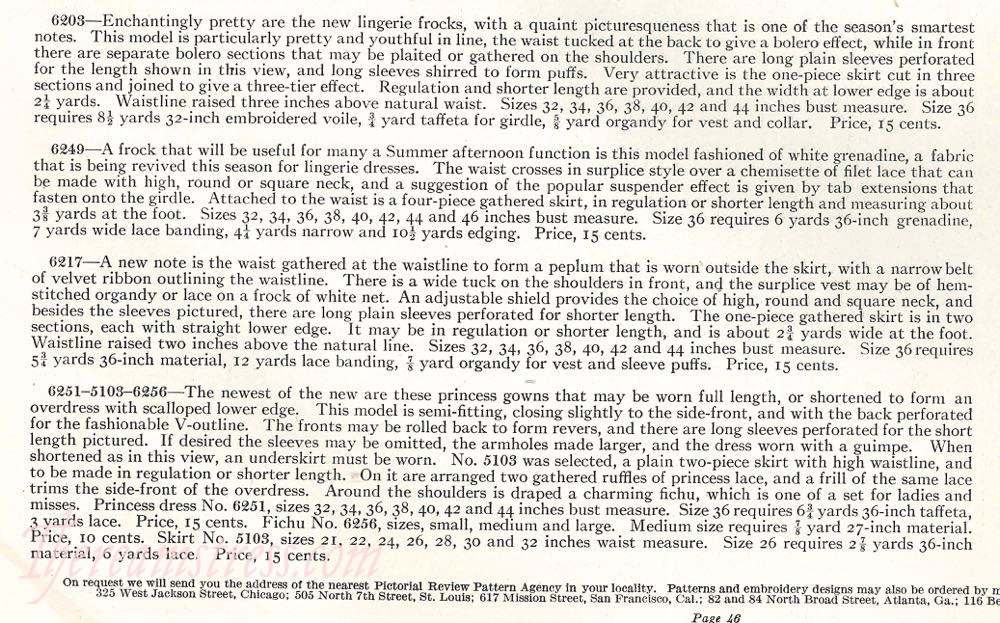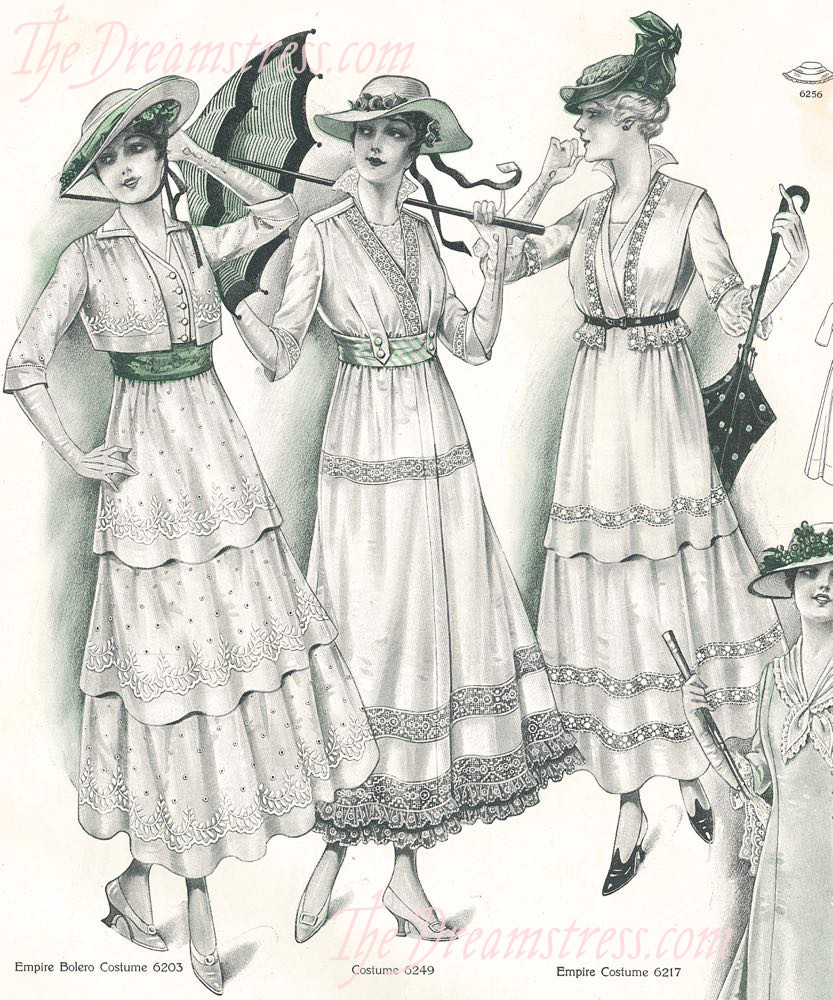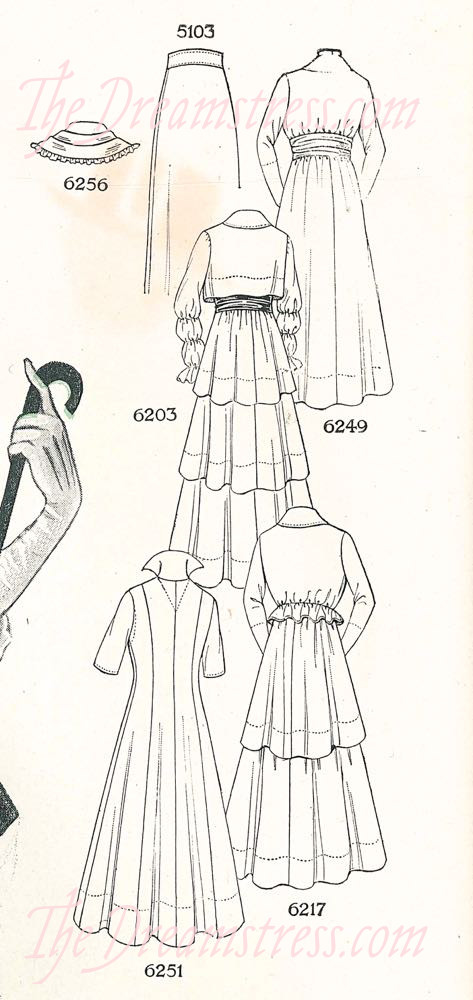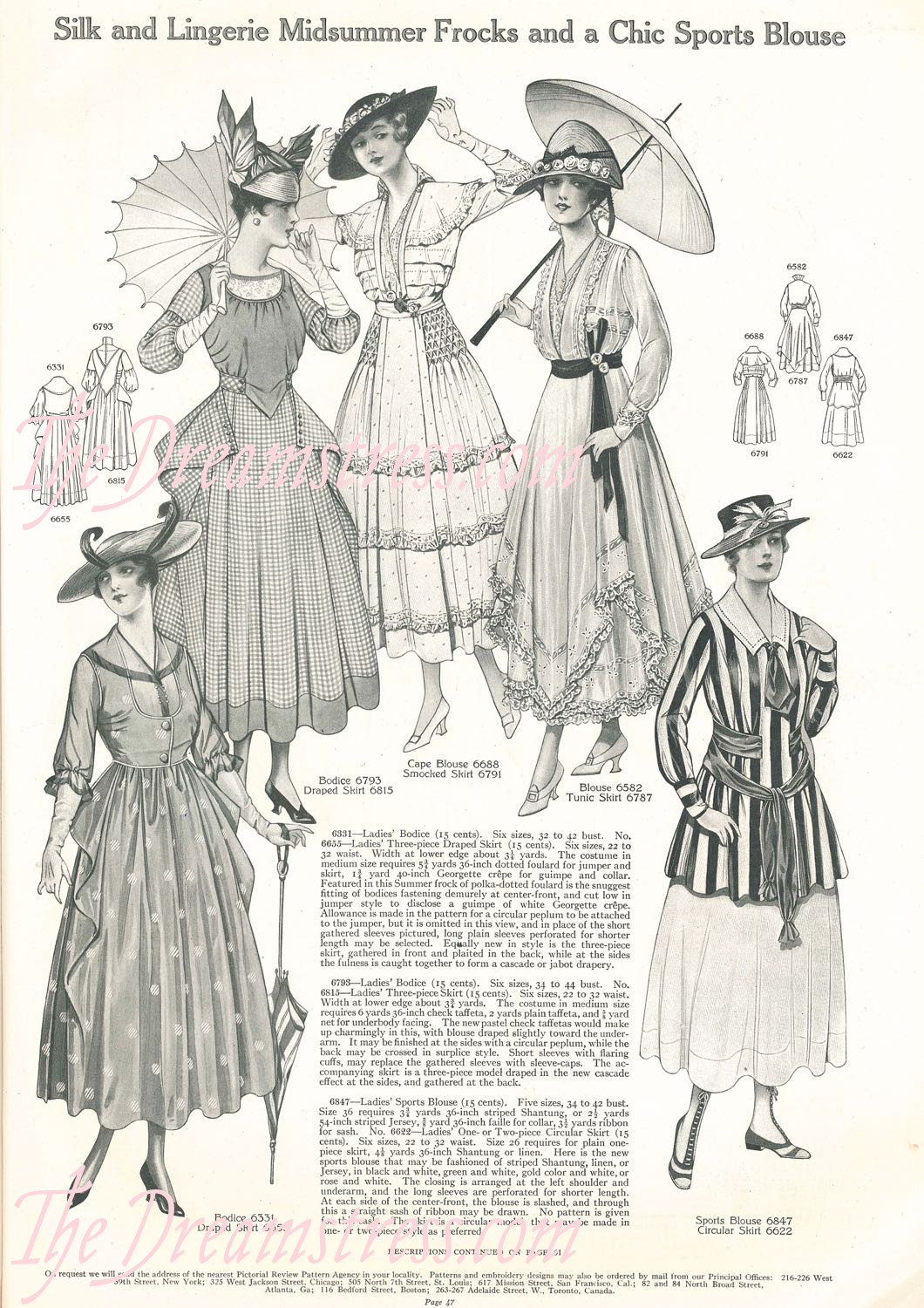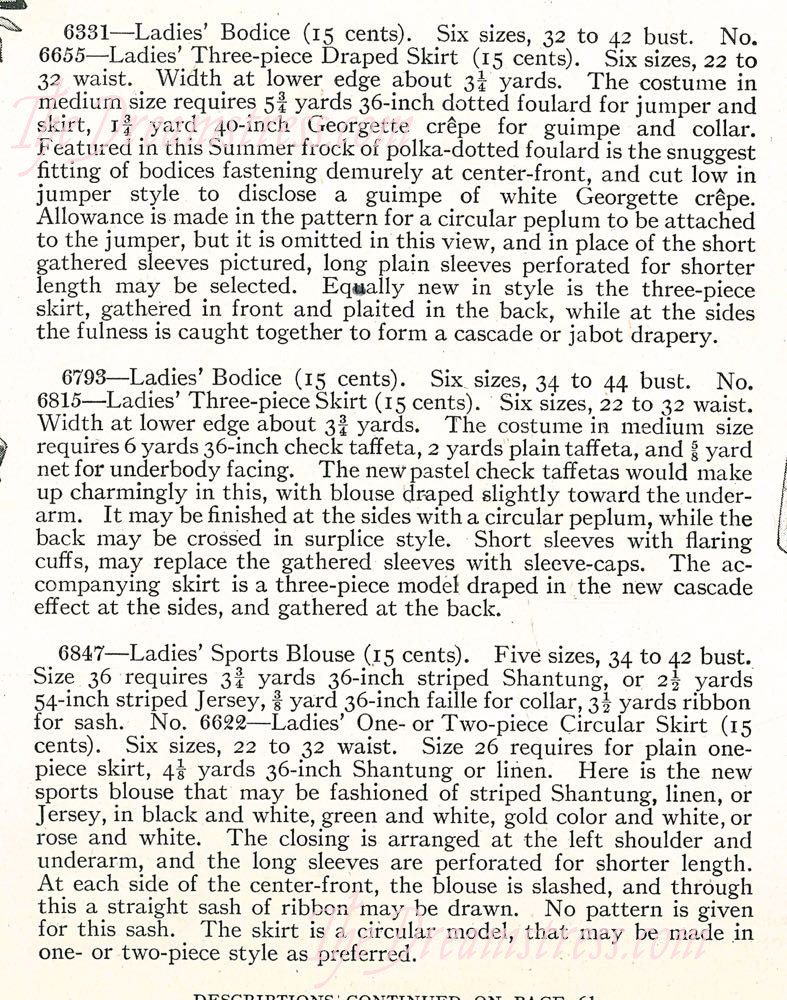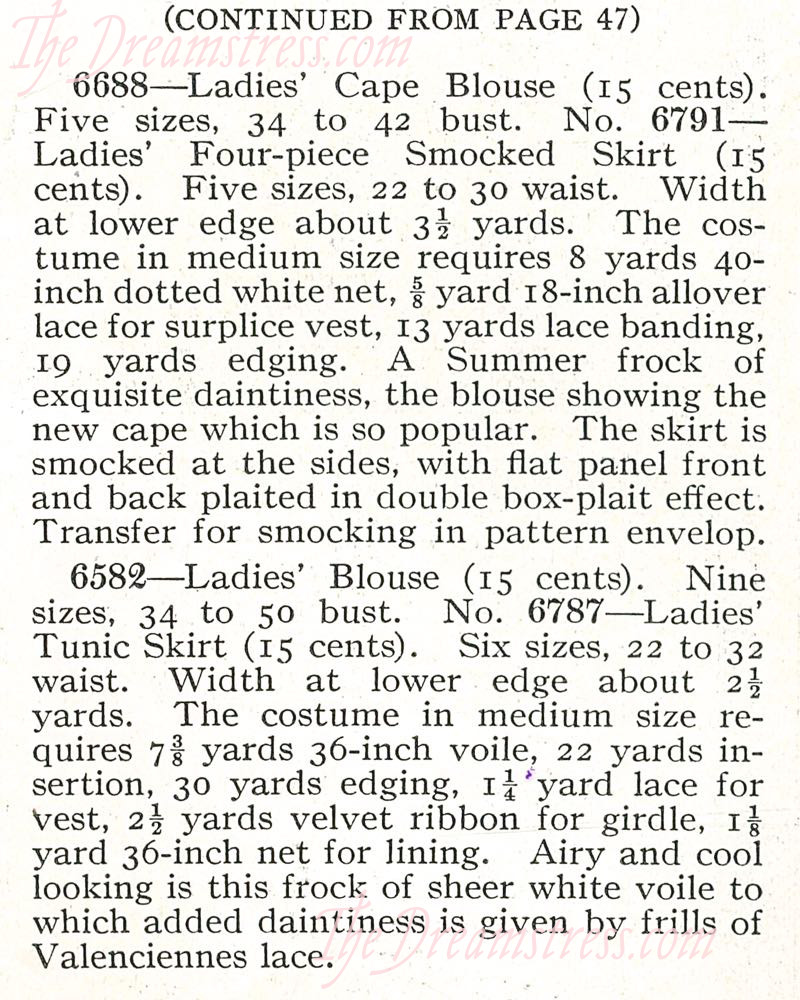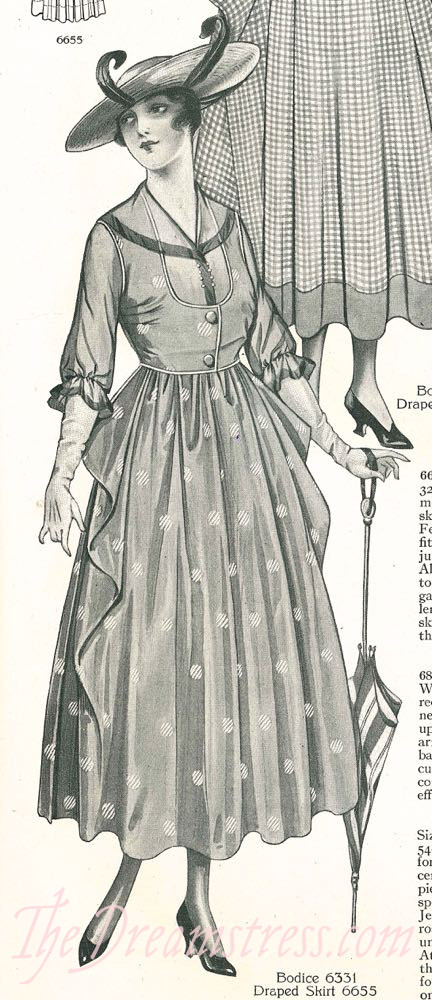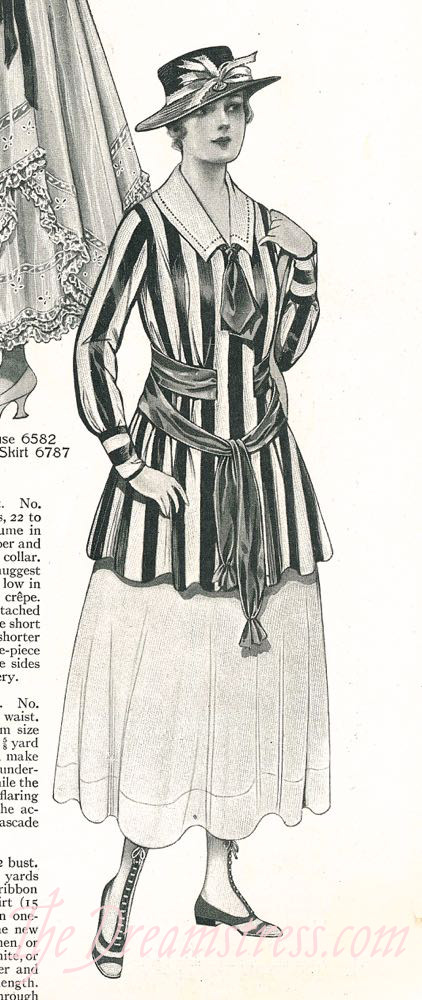It’s had a five year hiatus, but the mostly-Queen-Charlotte-inspired Frou Frou Francaise is back on my sewing schedule.
It hit the shoals of inactivity back in 2013 for two reasons. First, the fabric was really hard to sew, and was aggravating the chillblains and other arm problems I have in winter. Second I realised that I had two meters less fabric than I had thought, and wouldn’t be able to finish it without significant piecing – and even then without all the trimming I’d hoped to have. The two combined were just too demoralising, and I packed it away in the naughty bin.
I’m really trying to clear out my PHD (project half done) pile, so, inspired by all the people who were planning to make Robe a la Francaise based on the American Duchess 18th century costuming book, I pulled the Francaise back out after Costume College last year, and re-assessed it to see what I could do to finish it.
When I set the dress aside 5 years ago, the petticoat was completely finished, the back pleats were done, and I just needed to pleat the sides, and finish the front and then do sleeves.
Unfortunately in the last 5 years I’ve gotten a little wider, and the original linen under-bodice I’d made was a wee bit small. I also decided the linen was too soft and lightweight.
So I cut a new linen under-bodice, with an entirely new front. To save myself re-working the lacing eyelets by hand, I just sewed the new bodice over the old one, leaving the back lacing strip free:
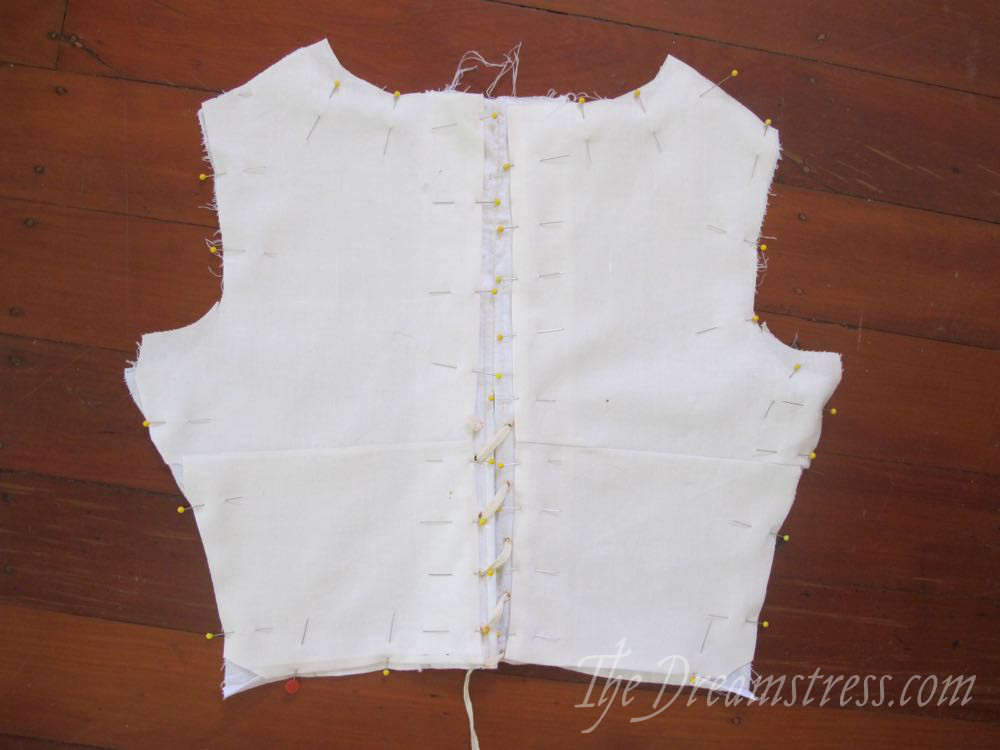
It was the very end of last winter, so I did this by machine, to save my hands as much as possible.
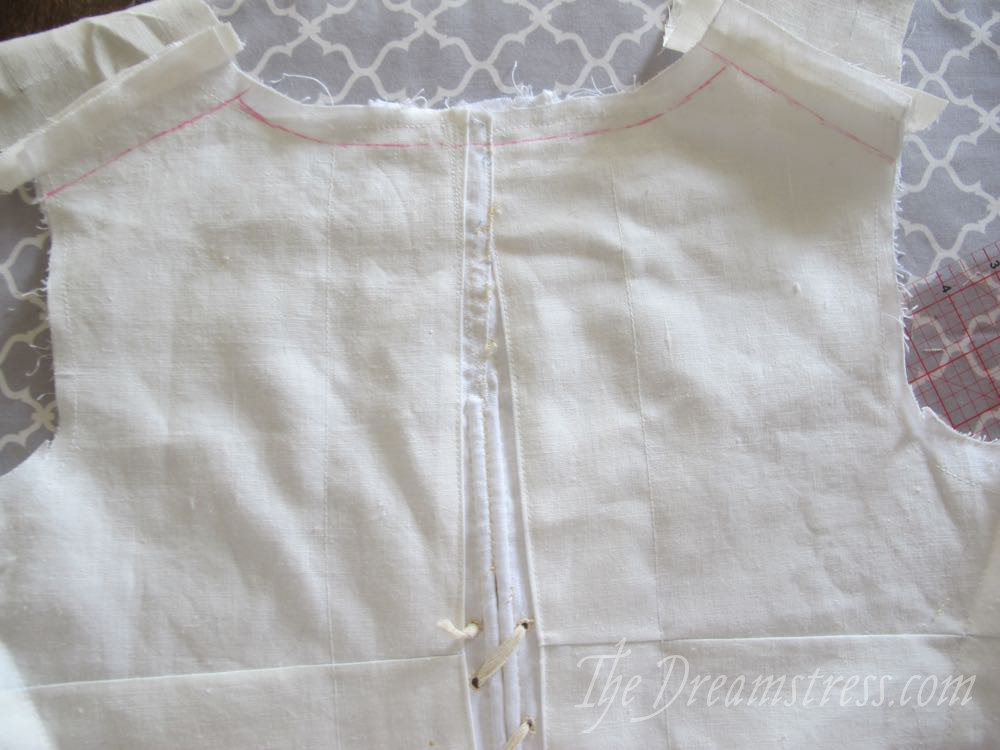
It’s decidedly historically inaccurate in detail, but rather accurate in spirit: re-using what I already had, and adapting it to my new body shape.
I’d had to completely take apart the original back pleating to re-make the under bodice, so this gave me a chance to re-do it, because I’d never been quite happy with it. I added in a hidden pieces panel on either side of the pleating, which means the new pleating is much lusher and fuller than the old pleating, despite taking barely any more fabric.
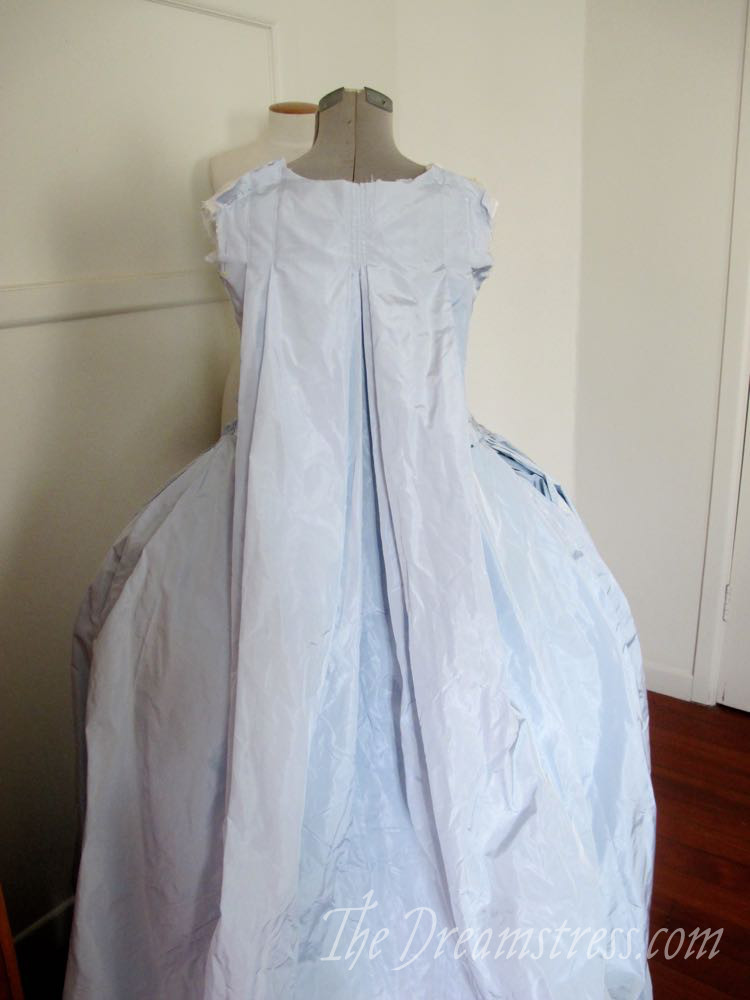

Unfortunately, although not big, my pieced addition really pushed my fabric to the limits of finish-ability.
I tried to find a similar fabric, sending off to Renaissance Fabrics (wonderful customer service) and other places in the US & UK for sample of any available ice blue silk taffeta, to no avail. Nothing was a halfway reasonable match to mine.
I decided that if I unpicked the petticoat, I could cut out a panel from each side and reduce the hem circumference by a full 40cm, and still be within the acceptable bound of petticoat-fullness for an 18th century gown. This would give me two big strips to use for trim: putting finishing within reach.
Of course, this meant undoing almost every carefully hand-stitched seam in the petticoat, and completely re-doing the waistband and pleats. But, a few days of solid work and it was done, reconstructed, and I had my extra fabric.
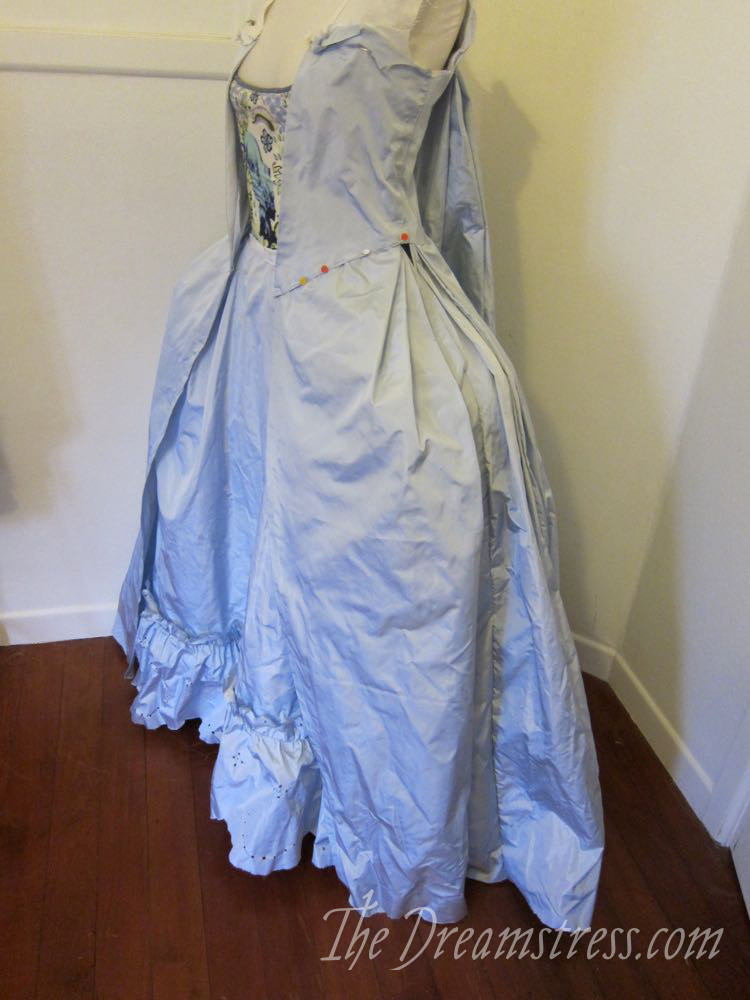
(I forgot to photograph the petticoat, so this shows the dress as it is today, not the proper sequence of making).
I then attached the front skirt panels (already cut) to the Francaise, which is when I discovered a cutting error from my original attempt that meant I had to do a nasty, conspicuous bit of piecing right on the hem of the front skirt panel.
Piecing is period, but there is a limit!
But I pieced, and I pleated the front skirt, and had it all basted together, but ergh, that piecing was OBVIOUS. And my remaining fabric bits were so scant.
I was feeling quite discouraged about the dress, when the costuming gods decided to simultaneously bless and mock me.
I’ve had a search on ‘blue silk taffeta’ on TradeMe (the NZ version of eBay, previously much better but now significantly crappier) since 2013, in the mad hope that someone who bought the same silk taffeta as I would decide they didn’t want it in their stash. It had been so long with no results that I’d almost forgotten about it.
In mid-June, just after I’d done all my piecing and sewn my skirt panels, I got a hit. Two meters of blue silk taffeta! The photo was terrible, but it included the selvedge – and it was a rather distinctive selvedge, and matched mine exactly. The listing was auction only, and the seller declined my request for a ‘buy now’. Oh wailey wailey! What if someone outbid me? Luckily no one else did, and I got the fabric – and it’s an exact match!
Of course, no blessing comes without a curse, so I had to unpick the seams attaching the skirt front panels, re-cut the panels (I’ll use the old ones for trim), and re-sew them all on.
By hand.
I did a calculation, and I’ve sewn every single seam in this darn thing by hand at least twice.
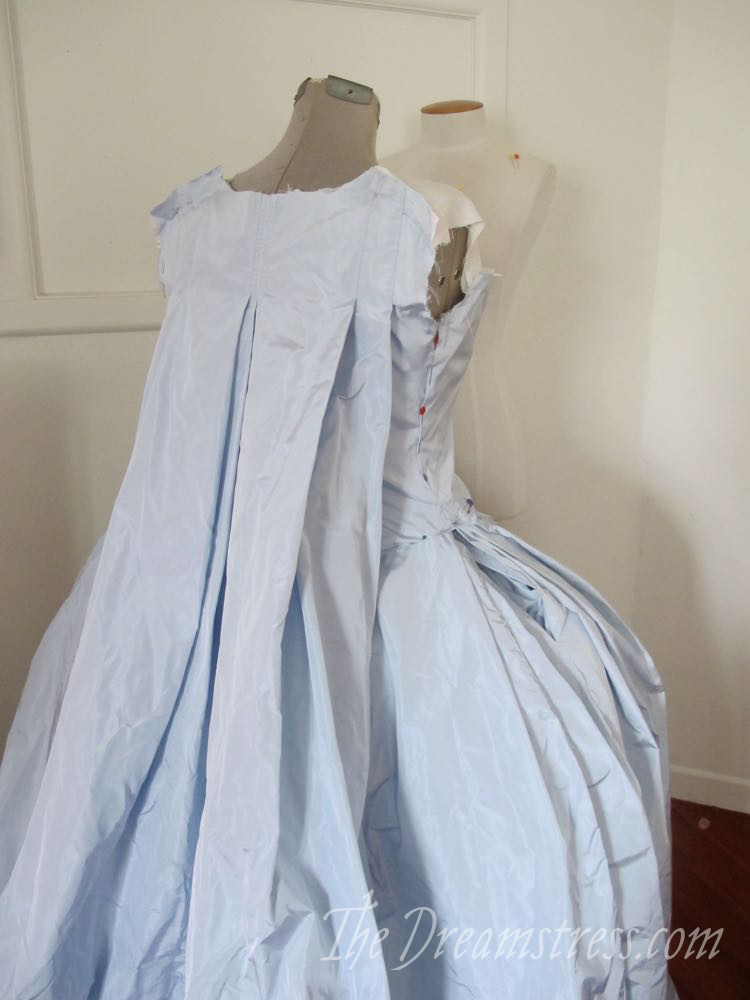
As the Francaise is now, I just needs the sleeves constructed and attached, hemming, and trimming. I’m hoping to get at least the first two done this weekend.
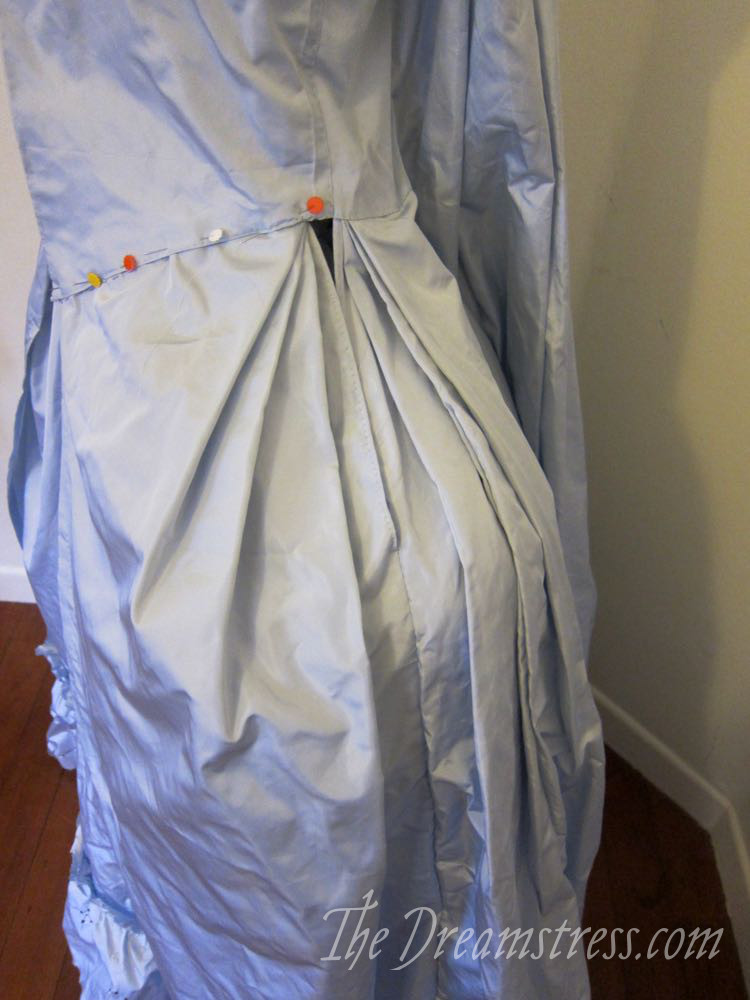
And in case you’re wondering, Felicity loves the Francaise just as much as she did when I started it.
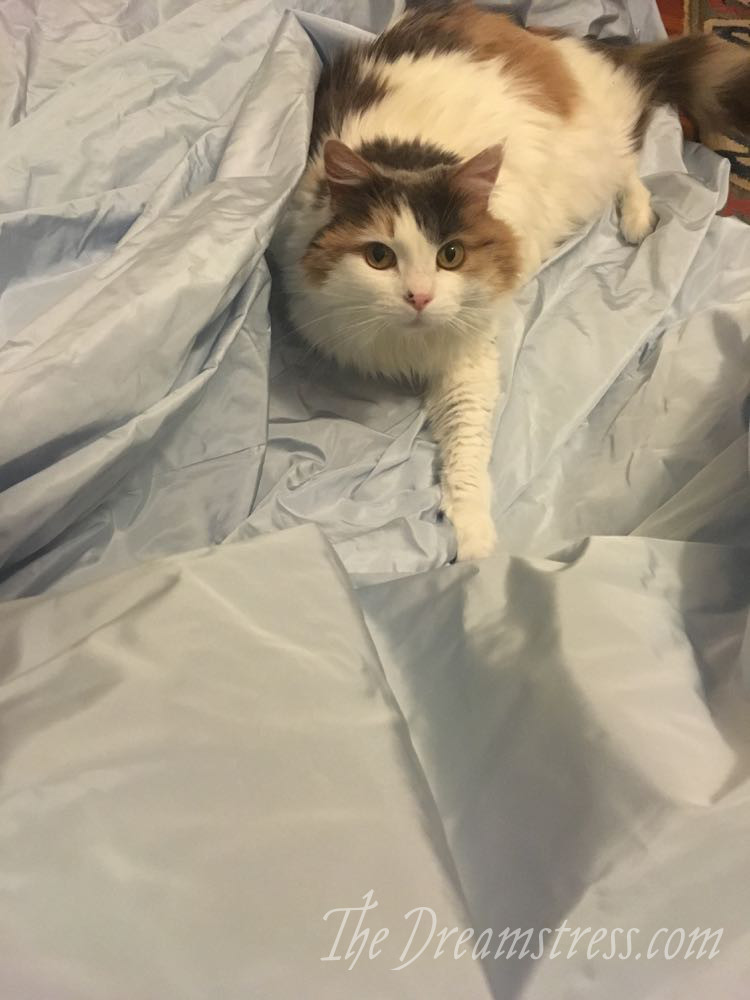
She’s just sad that I packed it away for so long:
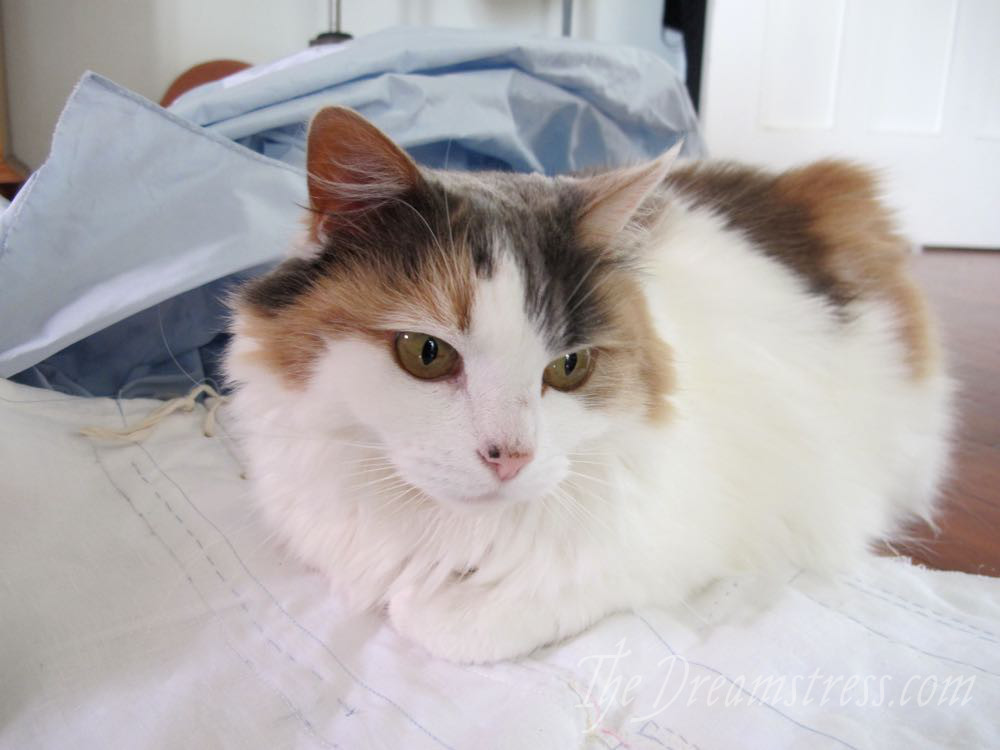
And a little mad that I denied her the pleasure of so many years of lying on it:
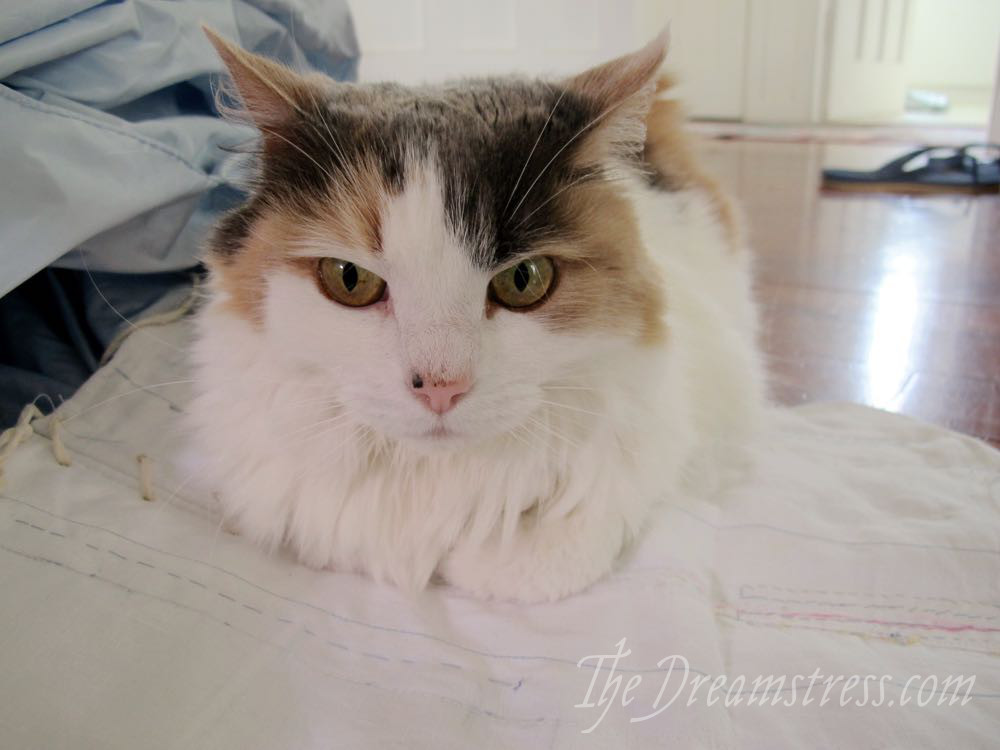
But all is forgiven now:
